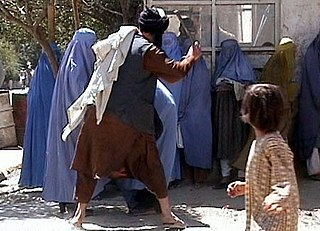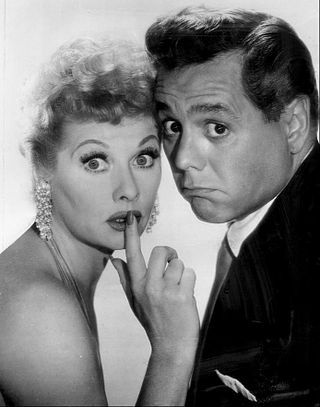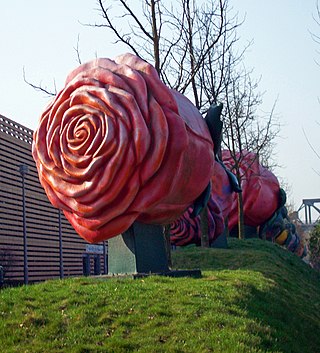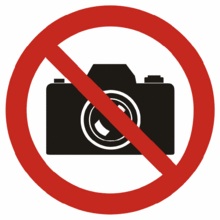
A photograph is an image created by light falling on a photosensitive surface, usually photographic film or an electronic image sensor, such as a CCD or a CMOS chip. Most photographs are now created using a smartphone or camera, which uses a lens to focus the scene's visible wavelengths of light into a reproduction of what the human eye would see. The process and practice of creating such images is called photography.

A photographer is a person who makes photographs.

Upskirting or upskirt photography is the practice of taking nonconsensual photographs under a person's skirt or kilt, capturing an image of the crotch area, underwear, and sometimes genitalia. An "upskirt" is a photograph, video, or illustration which incorporates such an image, although the term may also be used to refer to the area of the body inside a skirt, usually from below and while being worn.
Personality rights, sometimes referred to as the right of publicity, are rights for an individual to control the commercial use of their identity, such as name, image, likeness, or other unequivocal identifiers. They are generally considered as property rights, rather than personal rights, and so the validity of personality rights of publicity may survive the death of the individual to varying degrees, depending on the jurisdiction.

A Creative Commons (CC) license is one of several public copyright licenses that enable the free distribution of an otherwise copyrighted "work". A CC license is used when an author wants to give other people the right to share, use, and build upon a work that the author has created. CC provides an author flexibility and protects the people who use or redistribute an author's work from concerns of copyright infringement as long as they abide by the conditions that are specified in the license by which the author distributes the work.

Stock photography is the supply of photographs that are often licensed for specific uses. The stock photo industry, which began to gain hold in the 1920s, has established models including traditional macrostock photography, midstock photography, and microstock photography. Conventional stock agencies charge from several hundred to several thousand US dollars per image, while microstock photography may sell for around US$25 cents. Professional stock photographers traditionally place their images with one or more stock agencies on a contractual basis, while stock agencies may accept the high-quality photos of amateur photographers through online submission.

Street photography is photography conducted for art or inquiry that features unmediated chance encounters and random incidents within public places, usually with the aim of capturing images at a decisive or poignant moment by careful framing and timing. Although there is a difference between street and candid photography, it is usually subtle with most street photography being candid in nature and some candid photography being classifiable as street photography. Street photography does not necessitate the presence of a street or even the urban environment. Though people usually feature directly, street photography might be absent of people and can be of an object or environment where the image projects a decidedly human character in facsimile or aesthetic.

Flickr is an image hosting and video hosting service, as well as an online community, founded in Canada and headquartered in the United States. It was created by Ludicorp in 2004 and was previously a common way for amateur and professional photographers to host high-resolution photos. It has changed ownership several times and has been owned by SmugMug since April 20, 2018.
A legal release is a legal instrument that acts to terminate any legal liability between the releasor and the releasee(s), signed by the releasor. A release may also be made orally in some circumstances. Releases are routinely used by photographers, in film production, by documentary filmmakers, or by radio and music producers when they photograph, film, video or record the voice or performance of individuals to be sure that the person consents or will not later object to the material being used for whatever purpose the release wishes, i.e. that the release wishes to use the images, sounds or any other rendering that is a result of the recording made of the releasor. This will help in insuring the copyright owner has a clean chain of title for any work if it is later published, broadcast, shown in a public cinema or otherwise made public.

Privacy laws of the United States deal with several different legal concepts. One is the invasion of privacy, a tort based in common law allowing an aggrieved party to bring a lawsuit against an individual who unlawfully intrudes into their private affairs, discloses their private information, publicizes them in a false light, or appropriates their name for personal gain.
Personal data, also known as personal information or personally identifiable information (PII), is any information related to an identifiable person.
Time for prints is a term that describes an arrangement between a model and a photographer whereby the photographer agrees to provide the model with a certain number of pictures of selected photographs from the session, and a release or license to use those pictures in return for the model's time. "Time" refers to each person's time spent during the photo shoot and "print" refers to a physically printed photo, usually on photo paper. Both the photographer and the model get together and exchange their time, for free, and each receives the photos for their own usage. Since photos can now be delivered by means other than printed, some variant wordings of this arrangement are time for CD or trade for CD (TFCD). With TFCD, the photographer provides the selection of images on a CD instead of prints. Similarly, with the ease and convenience of digital high-resolution images, the generic term TF* has evolved, where it does not necessarily refer to a tangible CD or printed image since the same accepted rules apply.

Secret photography is the use of an image or video recording device to photograph or film a person who is unaware that they are being intentionally photographed or filmed. It is sometimes called covert photography.
Privacy law is the body of law that deals with the regulating, storing, and using of personally identifiable information, personal healthcare information, and financial information of individuals, which can be collected by governments, public or private organisations, or other individuals. It also applies in the commercial sector to things like trade secrets and the liability that directors, officers, and employees have when handing sensitive information.

A film still is a photograph, taken on or off the set of a movie or television program during production. These photographs are also taken in formal studio settings and venues of opportunity such as film stars' homes, film debut events, and commercial settings. The photos were taken by studio photographers for promotional purposes. Such stills consisted of posed portraits, used for public display or free fan handouts, which are sometimes autographed. They can also consist of posed or candid images taken on the set during production, and may include stars, crew members or directors at work.

Aubry v Éditions Vice-Versa Inc, [1998] 1 S.C.R. 591, was a decision by the Supreme Court of Canada in which the claimant, Pascale Claude Aubry, brought an action against Éditions Vice-Versa for publishing a photo taken of her in public. She claimed the photographing was a violation of her right to privacy under the Quebec Charter of Human Rights and Freedoms. The Court held that under Quebec law a photographer can take photographs in public places but may not publish the picture unless permission has been obtained from the subject.

Freedom of panorama (FOP) is a provision in the copyright laws of various jurisdictions that permits taking photographs and video footage and creating other images of buildings and sometimes sculptures and other art works which are permanently located in a public place, without infringing on any copyright that may otherwise subsist in such works, and the publishing of such images. Panorama freedom statutes or case law limit the right of the copyright owner to take action for breach of copyright against the creators and distributors of such images. It is an exception to the normal rule that the copyright owner has the exclusive right to authorize the creation and distribution of derivative works.

The intellectual property rights on photographs are protected in different jurisdictions by the laws governing copyright and moral rights. In some cases photography may be restricted by civil or criminal law. Publishing certain photographs can be restricted by privacy or other laws. Photography can be generally restricted in the interests of public morality and the protection of children.

The public domain (PD) consists of all the creative work to which no exclusive intellectual property rights apply. Those rights may have expired, been forfeited, expressly waived, or may be inapplicable. Because no one holds the exclusive rights, anyone can legally use or reference those works without permission.
Post-mortem privacy is a person's ability to control the dissemination of personal information after death. An individual's reputation and dignity after death is also subject to post-mortem privacy protections. In the US, no federal laws specifically extend post-mortem privacy protection. At the state level, privacy laws pertaining to the deceased vary significantly, but in general do not extend any clear rights of privacy beyond property rights. The relative lack of acknowledgment of post-mortem privacy rights has sparked controversy, as rapid technological advancements have resulted in increased amounts of personal information stored and shared online.













